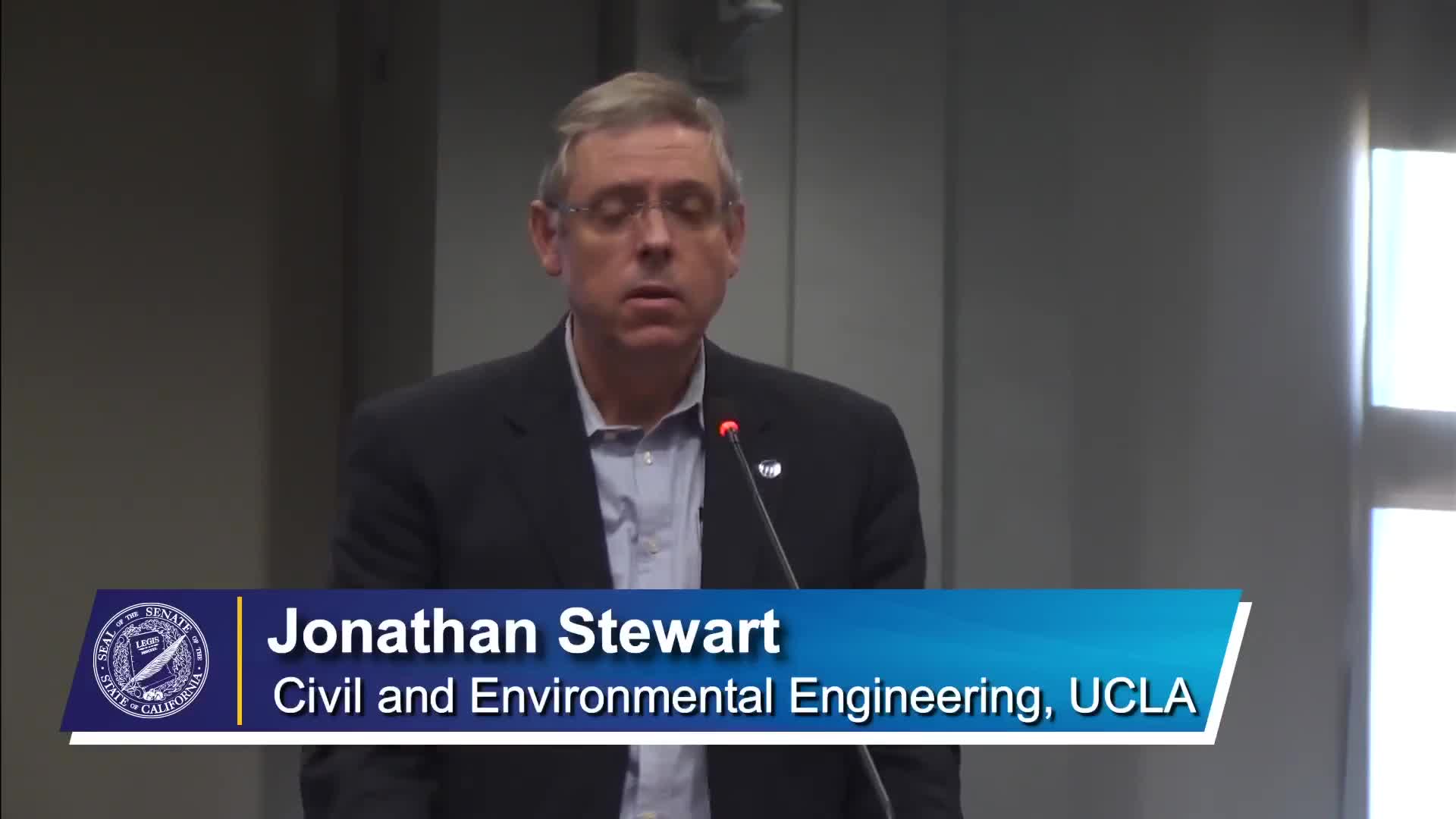Experts address coastal landslide and earthquake hazards for California rail systems
May 30, 2025 | California State Senate, Senate, Legislative, California
This article was created by AI summarizing key points discussed. AI makes mistakes, so for full details and context, please refer to the video of the full meeting. Please report any errors so we can fix them. Report an error »

Geohazards are emerging as a critical concern for the Lossan Rail Corridor, as highlighted in a recent meeting of the California State Senate Transportation Subcommittee. Experts emphasized the urgent need to address coastal landslides and earthquake risks that threaten rail infrastructure along the California coast.
During the meeting, a key speaker outlined the dangers posed by coastal landslides, which are exacerbated by climate change. These landslides occur when weakly cemented rock weathers and loses strength, often due to wave erosion. The speaker noted that this issue is not confined to Southern California; it affects the entire coastline. Additionally, the risk of soil liquefaction during earthquakes was discussed, with examples from past earthquakes in New Zealand illustrating the potential for severe damage to rail lines.
The meeting also addressed the impact of climate change on these geohazards, particularly the increased frequency and severity of storms that contribute to slope erosion and rising groundwater levels, which heighten liquefaction risks. To combat these threats, experts proposed a proactive approach that includes mapping hazard zones and implementing instrumentation to monitor potential landslides and ground shaking.
By identifying vulnerable areas, such as the Hollywood Fault crossing the rail line into Union Station, planners can better prepare for and mitigate risks. The use of sensors like inclinometers and accelerometers can provide early warnings, allowing for timely inspections and shutdowns of rail lines to prevent accidents.
The discussions underscored the importance of anticipating geohazards rather than merely reacting to them. As California continues to face the challenges of climate change and natural disasters, the need for strategic planning and innovative solutions in rail corridor management has never been more critical.
During the meeting, a key speaker outlined the dangers posed by coastal landslides, which are exacerbated by climate change. These landslides occur when weakly cemented rock weathers and loses strength, often due to wave erosion. The speaker noted that this issue is not confined to Southern California; it affects the entire coastline. Additionally, the risk of soil liquefaction during earthquakes was discussed, with examples from past earthquakes in New Zealand illustrating the potential for severe damage to rail lines.
The meeting also addressed the impact of climate change on these geohazards, particularly the increased frequency and severity of storms that contribute to slope erosion and rising groundwater levels, which heighten liquefaction risks. To combat these threats, experts proposed a proactive approach that includes mapping hazard zones and implementing instrumentation to monitor potential landslides and ground shaking.
By identifying vulnerable areas, such as the Hollywood Fault crossing the rail line into Union Station, planners can better prepare for and mitigate risks. The use of sensors like inclinometers and accelerometers can provide early warnings, allowing for timely inspections and shutdowns of rail lines to prevent accidents.
The discussions underscored the importance of anticipating geohazards rather than merely reacting to them. As California continues to face the challenges of climate change and natural disasters, the need for strategic planning and innovative solutions in rail corridor management has never been more critical.
View full meeting
This article is based on a recent meeting—watch the full video and explore the complete transcript for deeper insights into the discussion.
View full meeting
